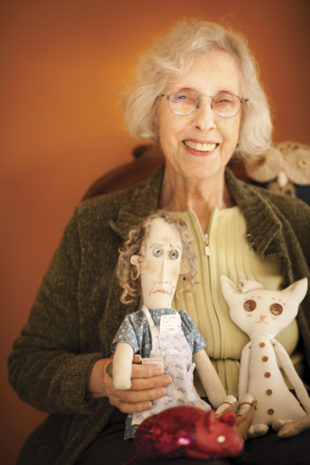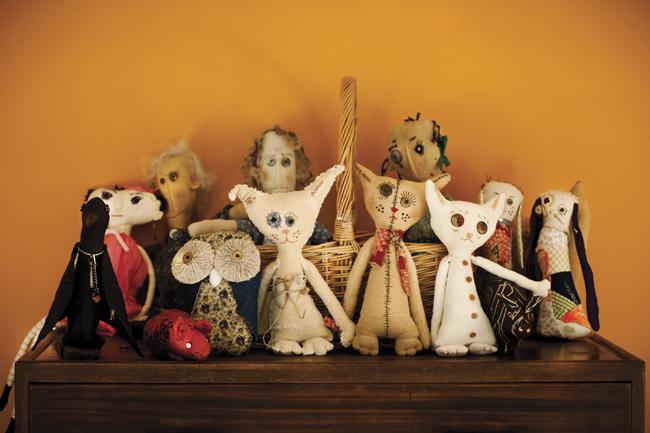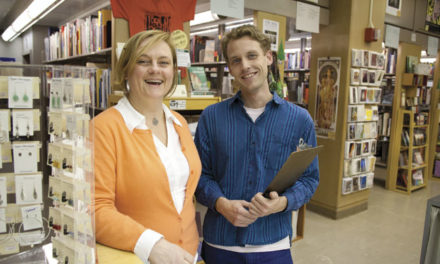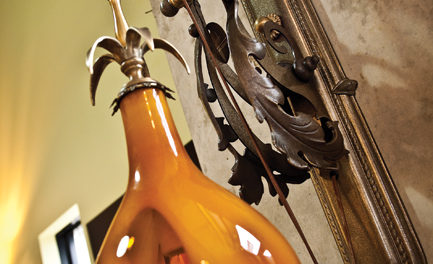
Jenny Kander with two of her creations. Photo by Shannon Zahnle
BY KELLY KENDALL
There’s Hattie, who likes embroidering daisies and ladybugs onto aprons and writing her favorite words down in a little book (the list includes “pinafore” and “porridge”). Max II, who has a secret love of lighthouses and isn’t sure he wants to know what might be hiding beneath his big dark cupboard. And Blackbird, who hates being overdressed with too much bling, signifying her approval of simple accessorizing with the gleam of a golden eye.
All three of these handmade, primitive-style dolls rest in the home of Jenny Kander, along with the rest of the “tribe,” as she calls them. But now Kander, a poet who began making the dolls on a whim a year ago while medically housebound, is ready to put them to work. She’s seeking a sponsor for a children’s book that would include photographs of dozens of the dolls along with the brief stories or prose poems she writes about each one. All proceeds from the sale of the book would go to a local children’s or animal-welfare charity to be determined.
“They’re all sitting here on top of my cupboard looking very decorative and charming, but I reckon they should be working for the city,” says Kander, 79, whose poems have been published in several books and who has compiled and edited two volumes of poetry, A Linen Weave of Bloomington Poets and Celebrating Seventy. A native of South Africa, she moved to Bloomington to be near her daughter, artist Tamar Kander.
The dolls, which cost $80 and up, take Kander five hours each to create just the patchwork that forms the body, then more time to “bring them to life,” she says.
“Sometimes the face comes together really quickly and has a lot of character, and sometimes it’s really not working out,” says Kander. “I have to leave it till the next day and look again, and think, ‘Oh, I know what it needs,’ and maybe I change the eyes or give it different hair. They sort of tell me what they need, in a way.
“I sound as if I’ve lost my mind,” adds Kander, “but once you start putting faces on them, they develop personalities and they develop their own stories, in a way. I suppose it’s the child in all of us.”











